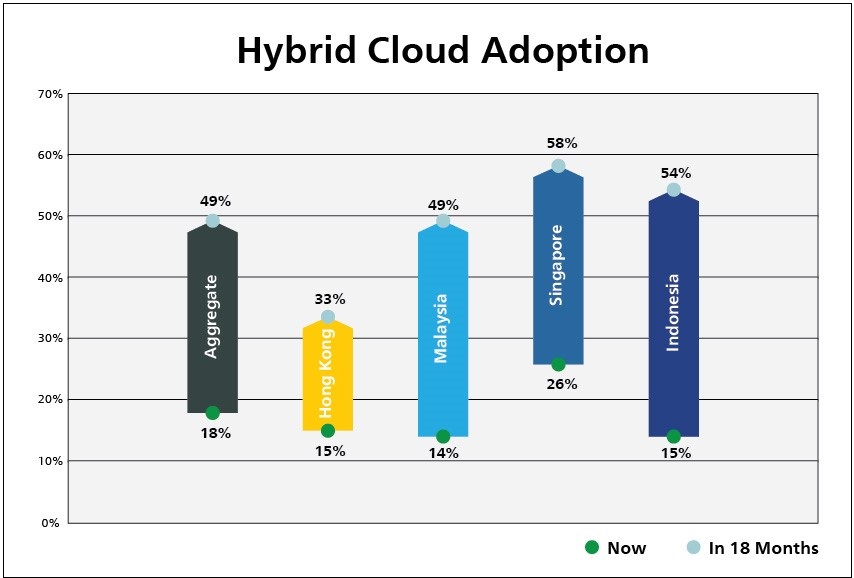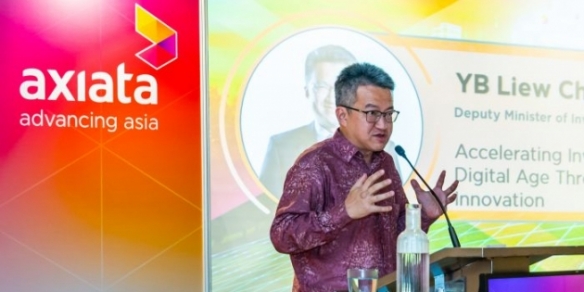The CIO’s new resource takes centre stage
By Dave Scott May 29, 2018
- New mandate for CIOs is to marry IT with evolving business strategy while finding new growth paths
- 37% of Singaporean, Malaysian businesses expect to begin working with MSPs in the next 18 months

 DISRUPTIVE technologies can breathe new life into age-old industries and dramatically change how industries such as finance, retail and manufacturing operate and connect with customers.
DISRUPTIVE technologies can breathe new life into age-old industries and dramatically change how industries such as finance, retail and manufacturing operate and connect with customers.
In this atmosphere of disruption, it’s more important than ever for the CIO to have a role not just in planning for IT, but in planning corporate business strategy.
IT has moved from a support function to play a critical role in developing long-term business strategy which today is increasingly dependent on IT capabilities.
As disruptive technologies begin to find their way into enterprise operations, the organisation will need to react and evolve. The need for IT expertise to have a voice in business strategy development, and every level of decision making will grow.
Choices will need to be made: with CIOs’ intimate knowledge of the business, should their focus be on the day-to-day maintenance of their business, or developing services and applications that drive revenue? Does it make sense to work with a managed service provider (MSP) to manage day-to-day IT requirements while assuring a predictable IT budget for the service?
And what of the value add of partnering with an MSP’s seasoned IT consultants who know your business as well as what challenges lie ahead in the fast-changing technology landscape?
Less than one in five organisations in Asia outsource over 50% of their IT work today. However, that looks likely to change. According to a recent survey by NTT Communications, some 37% of Singaporean and Malaysian businesses expect to catch up with the growing trend and begin working with MSPs in the next 18 months.
This situation is even more pronounced in emerging markets like Indonesia, where its adoption is set to soar from 27% to 46% in the same timeframe – indicating that emerging markets are more inclined to employ expertise from MSPs.
Security concerns continue to plague Southeast Asia
Over two-thirds of survey respondents in Singapore, Malaysia and Indonesia cited security as the top reason to consider an MSP.
In Indonesia, security considerations are rated as the highest (82%) among all Asian countries surveyed – in sharp contrast to Hong Kong which has the lowest level of security concern at 43%.
It is not difficult to understand the growing concern about security in the region considering high visibility incidents such as recent security breaches at four Singapore universities and a massive online data breach involving 46 million mobile phones in Malaysia, just to name a few.
Optimising operations and improving workflows (54%) as well as keeping up to date with the latest technologies (65%) are among other commonly cited reasons to consider working with an MSP in Asia. Interestingly, a significant percentage of Indonesian businesses see freeing up their IT staff to work on key projects, and skills gaps for IT projects as reasons, both at 62%.
Hybrid cloud and SD-WAN are taking Southeast Asia by storm
Another emerging trend we identified is that hybrid cloud will become the de facto cloud deployment strategy across Asia. Indonesia will record the strongest growth in Asia from 15% to 54% over the next 18 months, however, Singapore and Malaysia will also see a 35% and 33% growth respectively.

Public cloud usage in Asia will dip from 25% to 14% in the same timeframe. Private cloud usage in Asia will follow suit with use expected to drop from 50% to 34%.
Approximately 50% of Asian businesses are considering deploying SD-WAN, viewing it as an enabler of hybrid cloud, and Azure Stack over the next 18 months – both are expected to see a surge in use from the current deployment rate at 18% and 13% respectively.
This idea echoes with the feedback we received from one survey respondent who is a business director at a banking consortium. He noted: “We use MSP services as and when we need them as it is not realistic for us to have a fixed, in-house resource for some services. We use these services for projects like ERP, virtualization, SD WAN, Azure Stack, cloud migration or infrastructure. MSPs provide guidance helping us to embrace new technology.”
The light at the end of the tunnel
No matter where a company stands in its large-scale digital transformation, chances are 70% of their transformation is destined to fail according to McKinsey and Co. To defy this norm, it is imperative for CIOs to evaluate their internal resources, capabilities and workflows thoroughly before translating their corporate vision into business success.
To improve survival rates, enlisting help from an MSP that has global resources and proven capabilities of managing their digital transformation from conception to fruition should also be considered as a critical business enabler.
Amidst an array of pressing IT challenges such as security and work flow optimisation, the new mandate for CIOs is to marry IT with evolving business strategy while finding new growth paths. More than ever, MSP’s global capabilities of addressing IT challenges and opportunities are highly regarded in the process of fine-tuning the blueprint for a business’ digital transformation.
By bringing MSPs on board to align with business mandates, Southeast Asian countries can better align new technologies such as hybrid cloud and SD-WAN resources that are predicted to soar at an astronomical rate.
Dave Scott is the solutions director at NTT Communications Managed Services.
Related Stories:
Managed services evolve as businesses seek higher efficiency
EY to become SAP delivery and managed service COE across Asean and APAC
McAfee study: 1-in-4 organisations using Public Cloud has had data stolen



